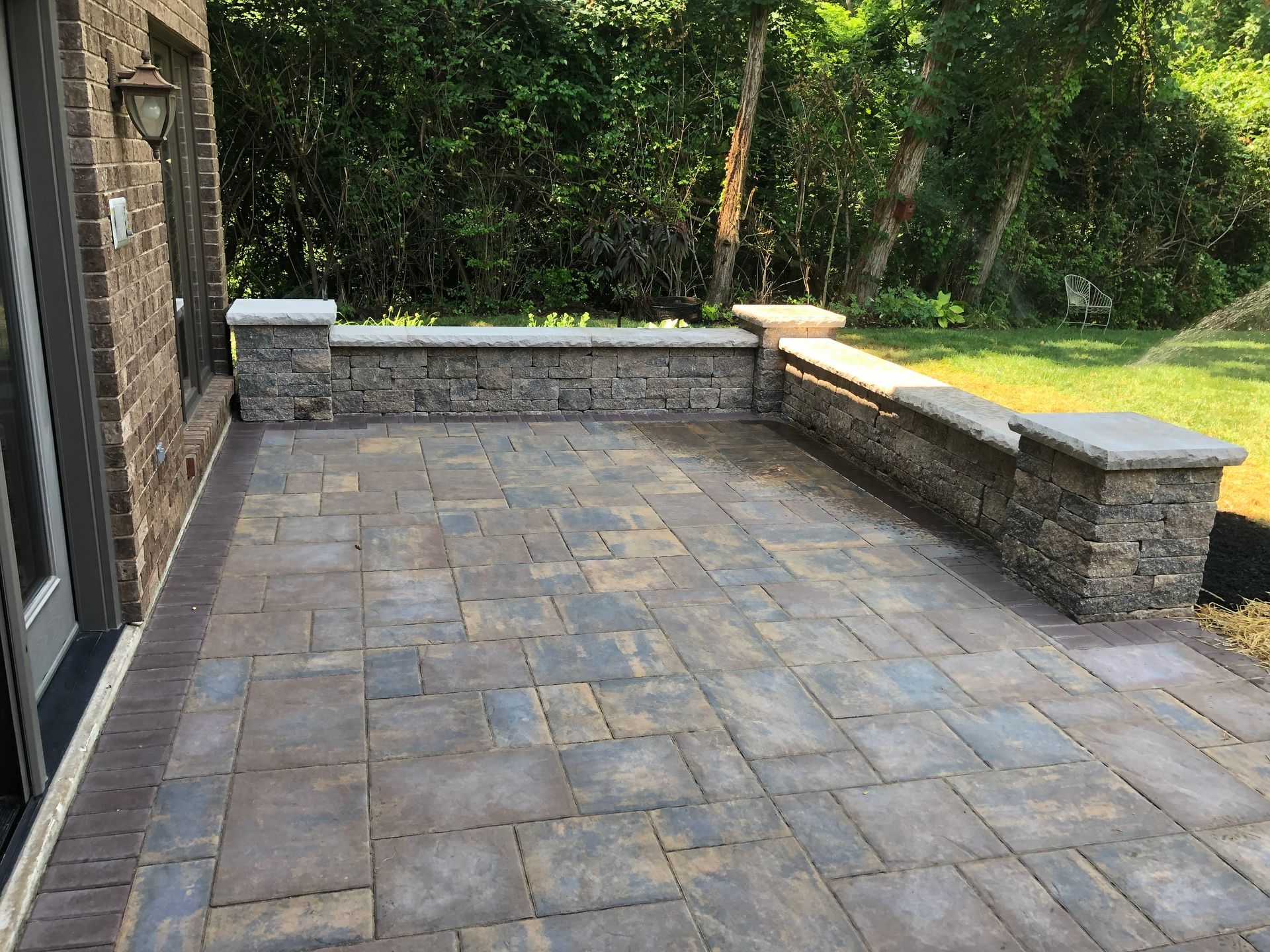Small Backyard, Big Impact: Hardscape Ideas for Compact Spaces
Adam Lawson • March 25, 2025
Not every homeowner is blessed with a sprawling backyard, but a small space doesn’t mean you have to sacrifice style or functionality. With the right hardscape ideas, you can transform even the tiniest yard into a stunning outdoor oasis. Hardscaping—think stone, concrete, wood, and other non-plant elements—offers endless possibilities to maximize space, add personality, and create a low-maintenance retreat. Here’s how to make a big impact in a compact backyard with creative solutions like vertical walls, multi-level patios, and more.
1. Go Vertical with Living Walls or Stone Features
When floor space is limited, look up! Vertical hardscaping is a game-changer for small yards. A living wall—where plants grow directly on a vertical surface—can double as a natural art piece while softening the hard lines of your space. Pair it with a sleek stone or brick accent wall for texture and contrast. Not into plants? A decorative trellis or a wall-mounted water feature can add height and sophistication without eating up precious square footage.
2. Multi-Level Patios for Depth and Function
Why settle for one flat surface when you can have multiple levels? A multi-level patio creates the illusion of a larger space by breaking up the yard into distinct zones. Use a low retaining wall to elevate a cozy seating area, then add a few steps down to a fire pit or dining nook. Materials like flagstone, pavers, or poured concrete keep it clean and modern. Bonus: the elevation changes can hide storage underneath or define areas for entertaining versus relaxing.
3. Built-In Seating to Save Space
Furniture can clutter a small yard fast. Instead, incorporate built-in benches along a wall or around a fire pit. Top them with cushions for comfort, and you’ve got seating that doubles as a design feature. Pair this with a narrow, rectangular table built into the hardscape, and you’ve got a streamlined setup that maximizes every inch without feeling cramped.
4. Paving Patterns for Visual Interest
In a small backyard, the ground itself can become a focal point. Play with paving patterns—herringbone, basketweave, or even a mix of stone and gravel—to draw the eye and add character. Opt for lighter colors to make the space feel open, or go bold with a contrasting border that defines the edges. A well-designed path winding through the yard can also trick the eye into seeing more depth than there actually is.
5. Compact Water Features
A small fountain or bubbling rock can bring tranquility to your backyard without overwhelming it. Mount a slim waterfall on a wall or tuck a tiny pond into a corner with a few sleek stones. The sound of water adds ambiance, making your compact space feel like a luxurious escape.
6. Fire Pits That Fit
Love the idea of a fire pit but worried about space? Go for a small, circular design sunk into the ground or a tabletop version that sits on a multi-level patio. Surround it with built-in seating or a curved retaining wall, and you’ve got a cozy gathering spot that doesn’t dominate the yard.
7. Modular Hardscaping for Flexibility
For ultimate adaptability, consider modular elements like stackable concrete blocks or movable pavers. These let you reconfigure your space as needs change—think temporary planters, seating, or even a mini stage for outdoor movie nights. It’s hardscaping that grows with you, perfect for a small yard that needs to multitask.
Final Thoughts
A small backyard doesn’t have to limit your creativity—it’s an opportunity to think smarter. Vertical walls bring height, multi-level patios add dimension, and strategic hardscaping turns every corner into a statement. With a little planning, your compact space can pack a punch that rivals any big lot. So grab a sketchbook, pick your favorite idea, and start building your tiny-but-mighty outdoor haven today!




